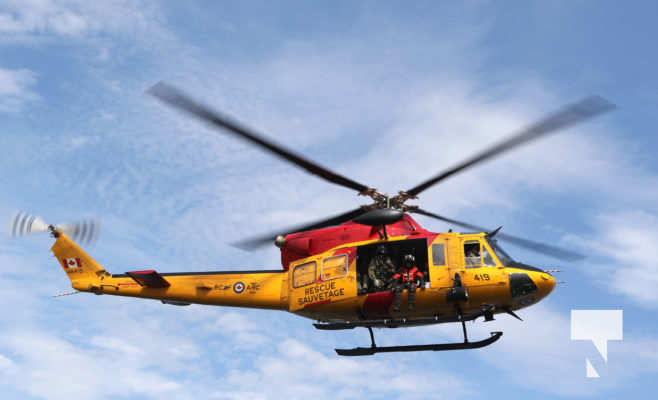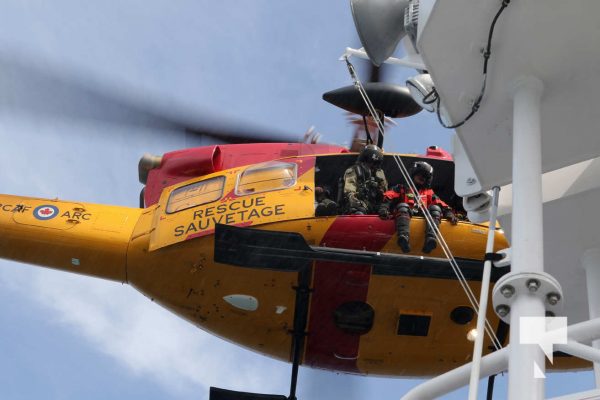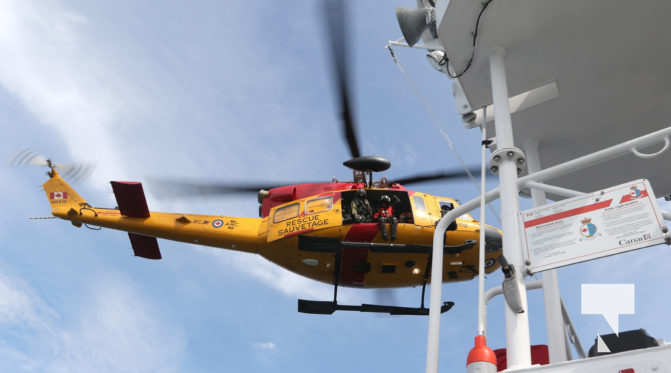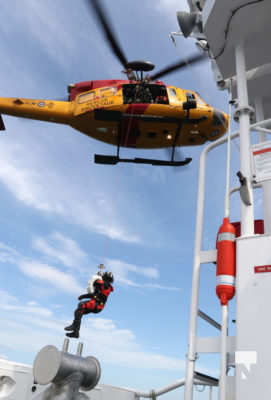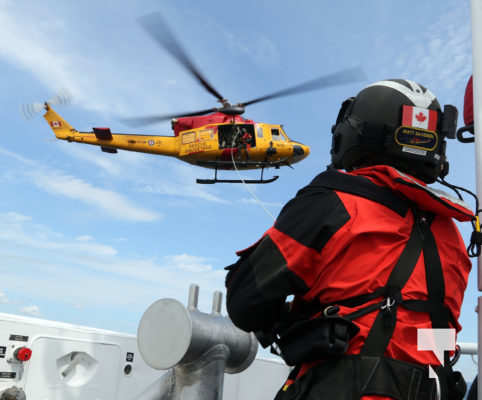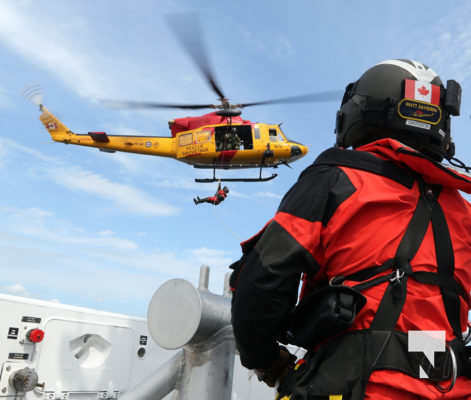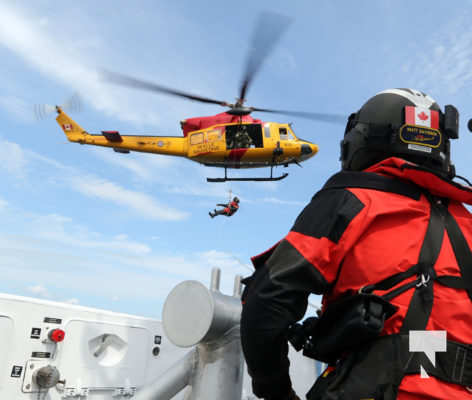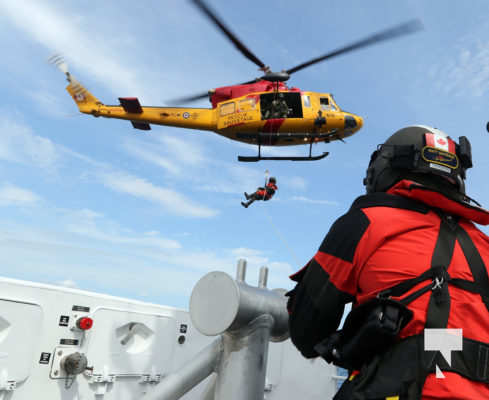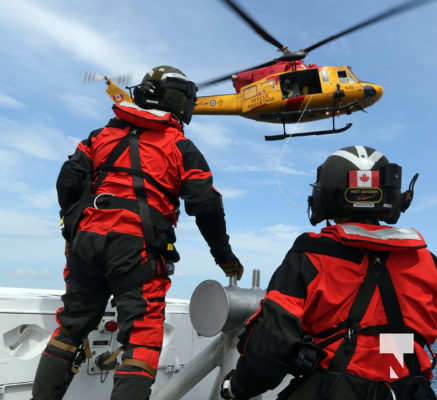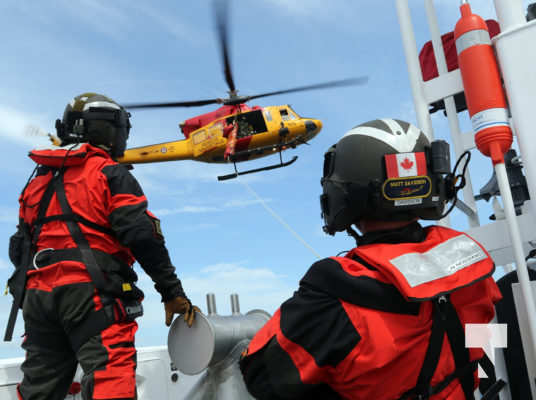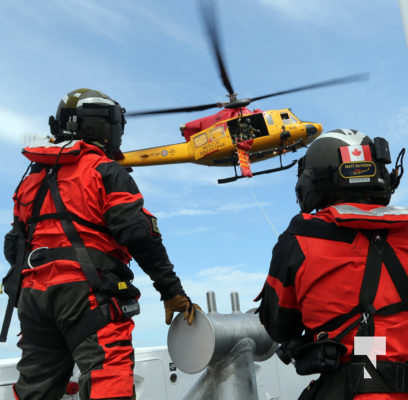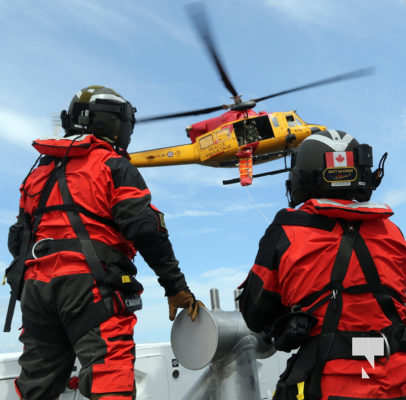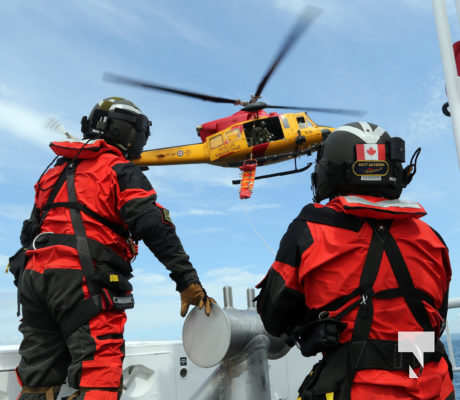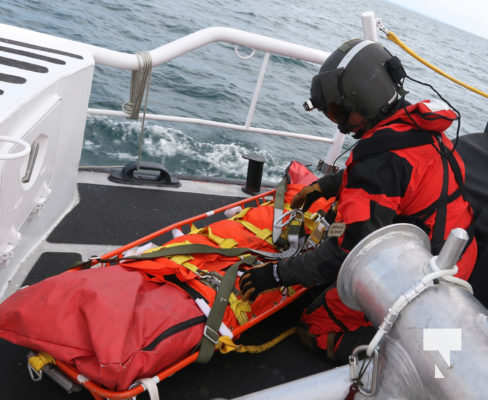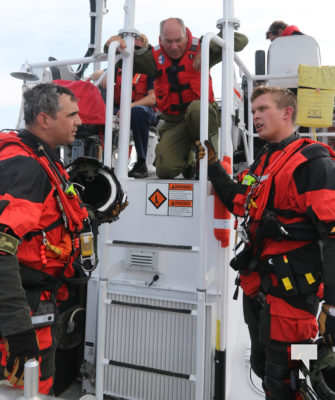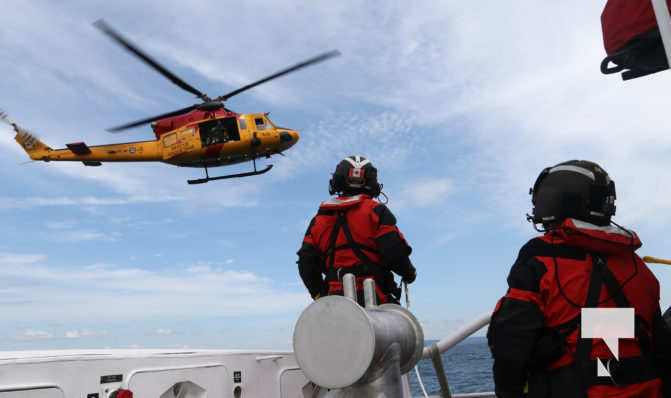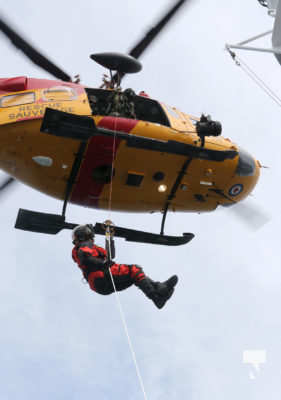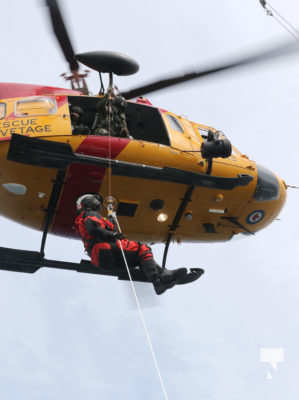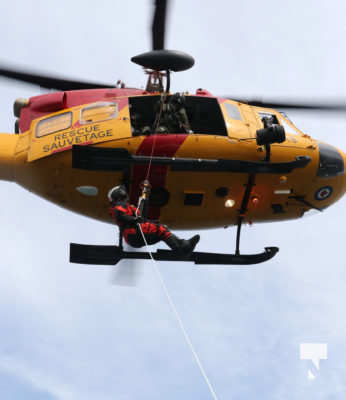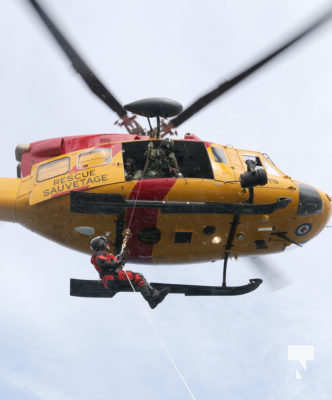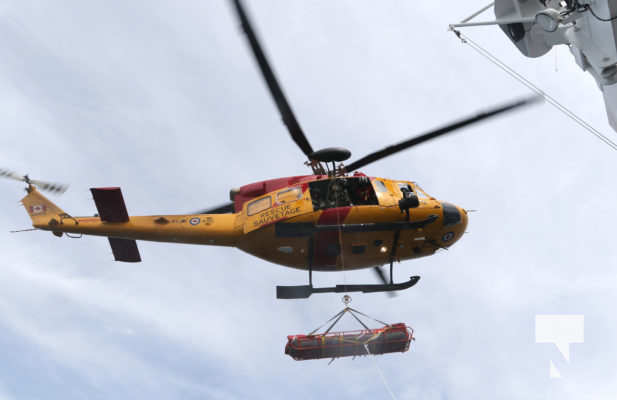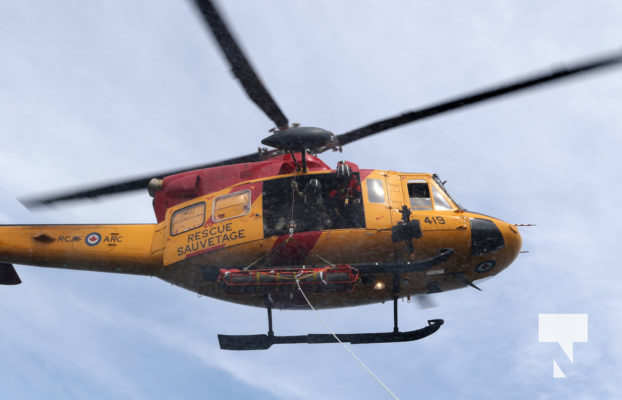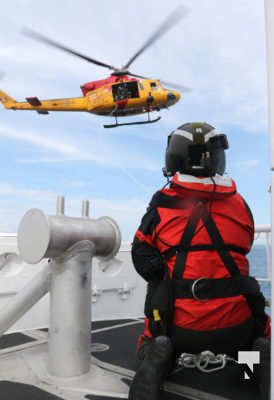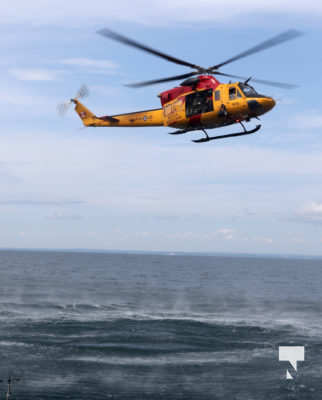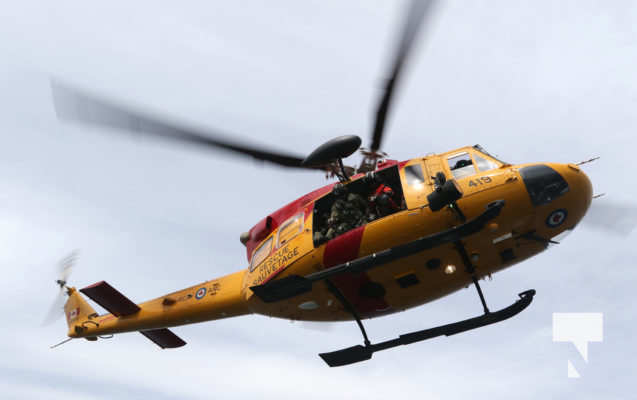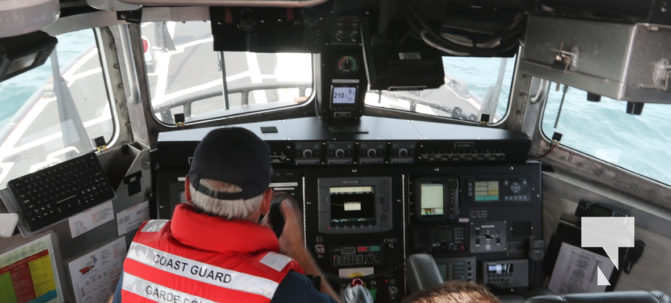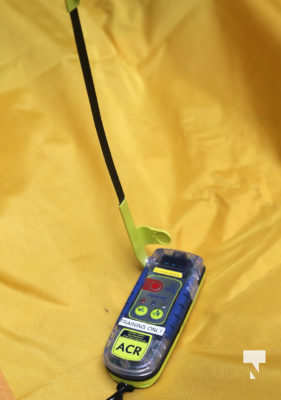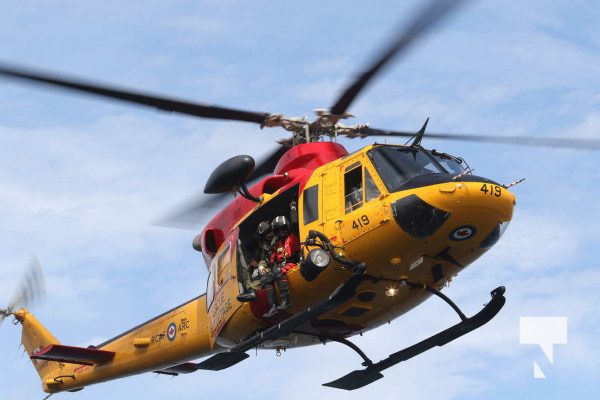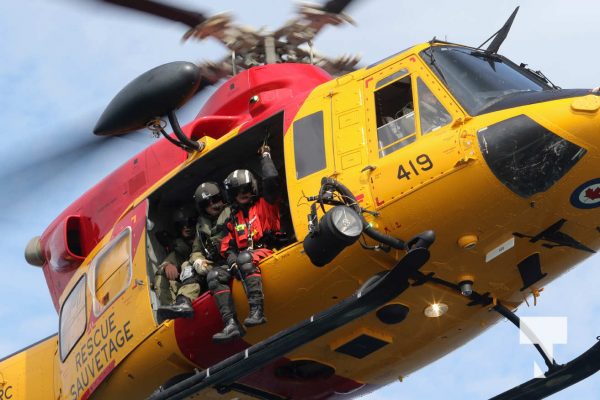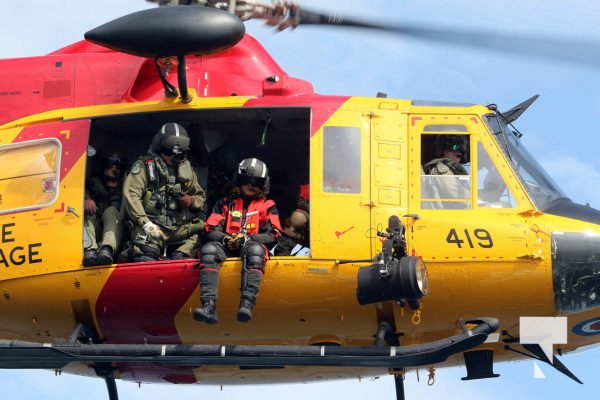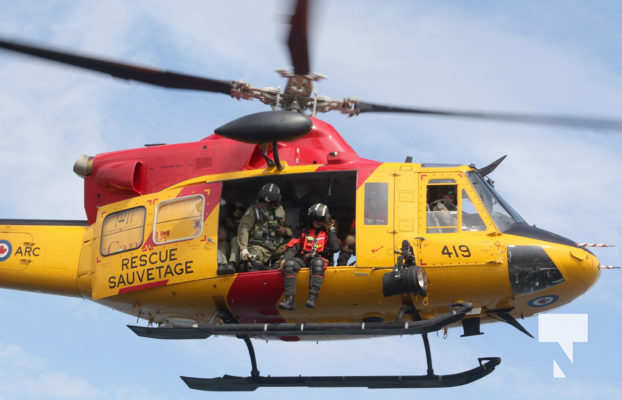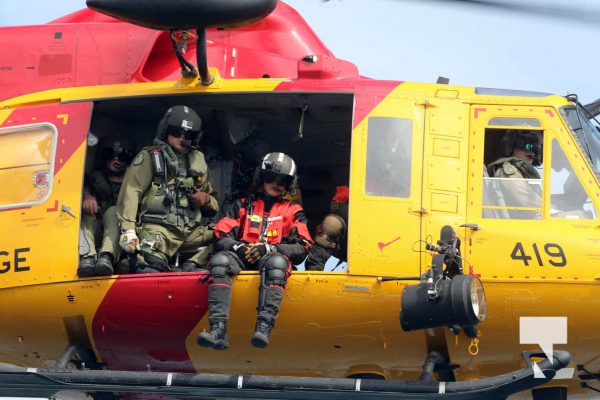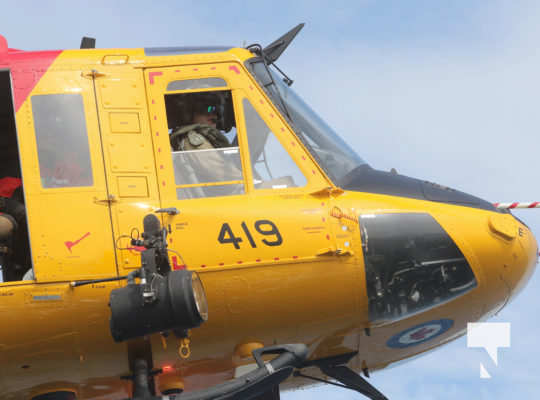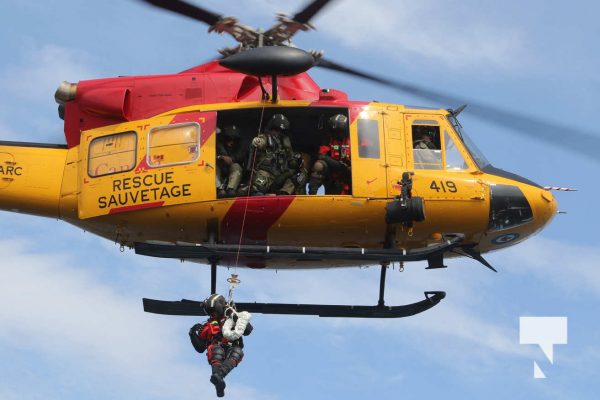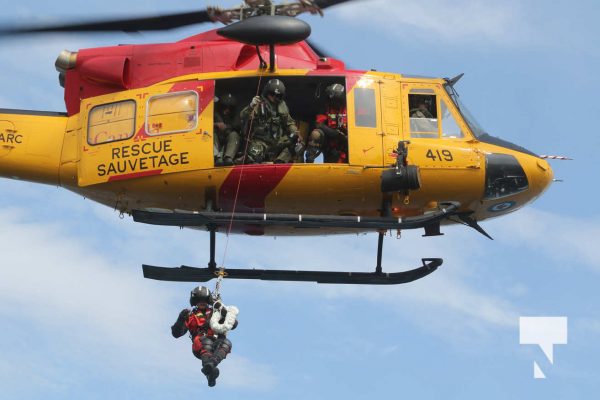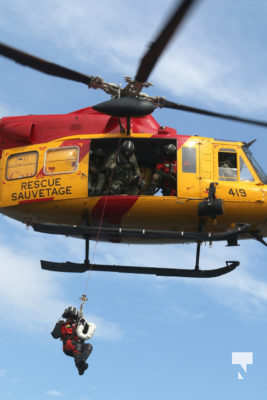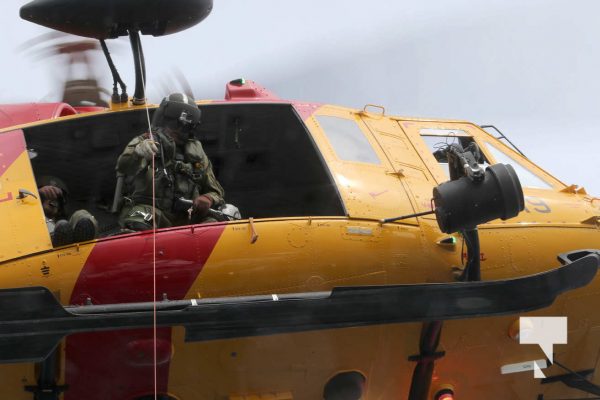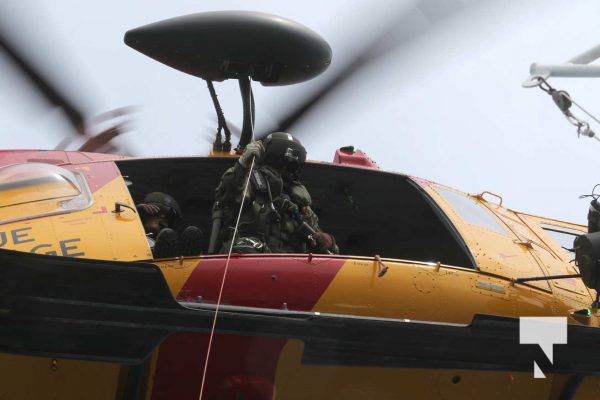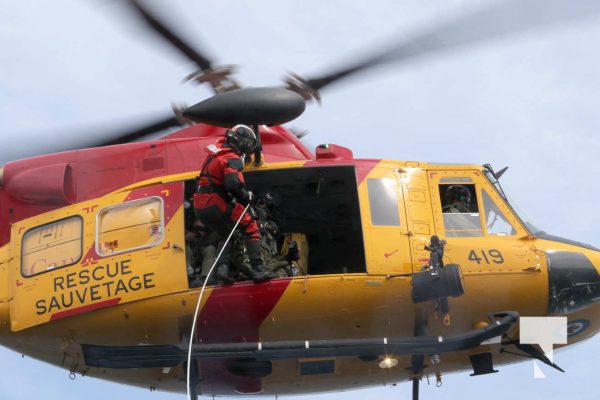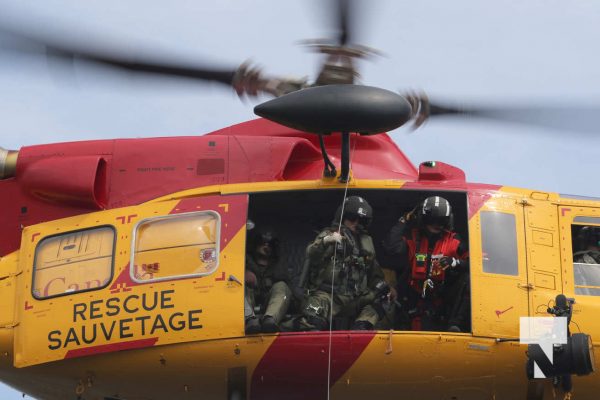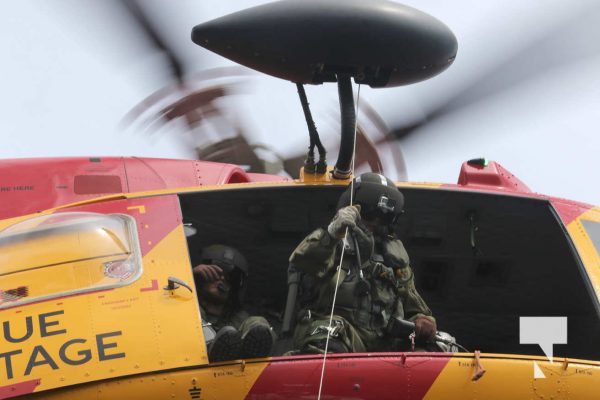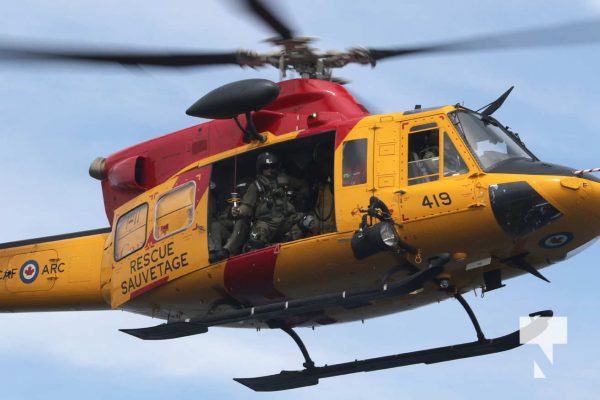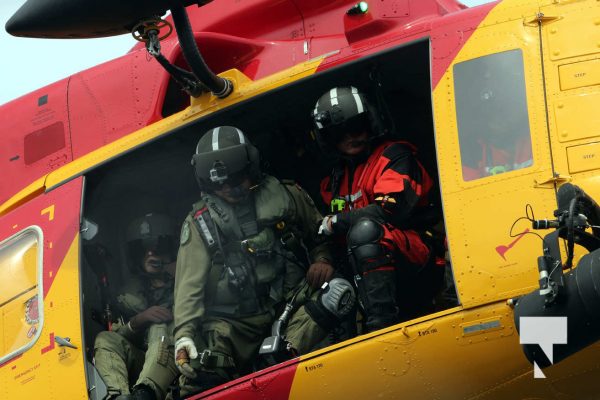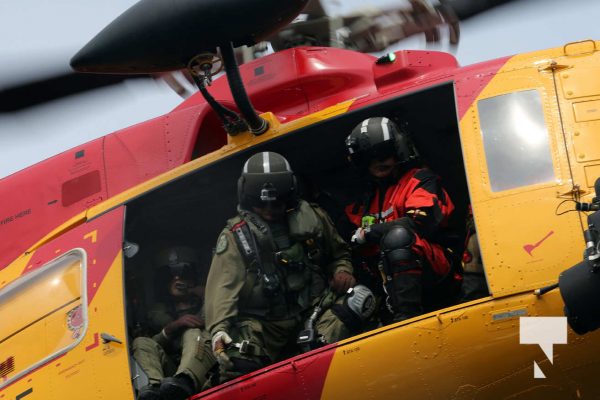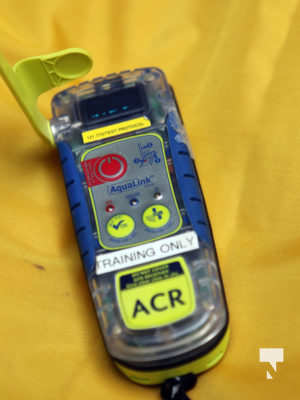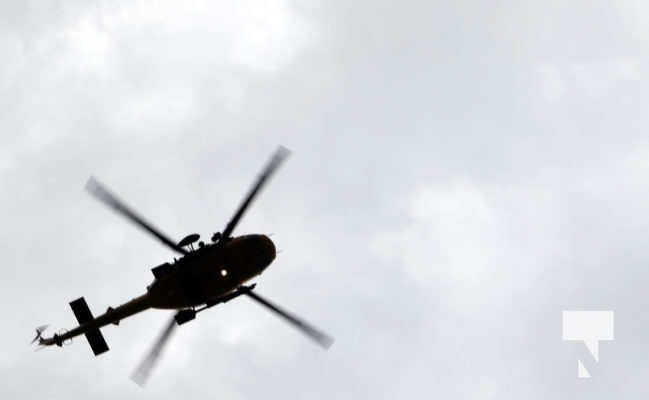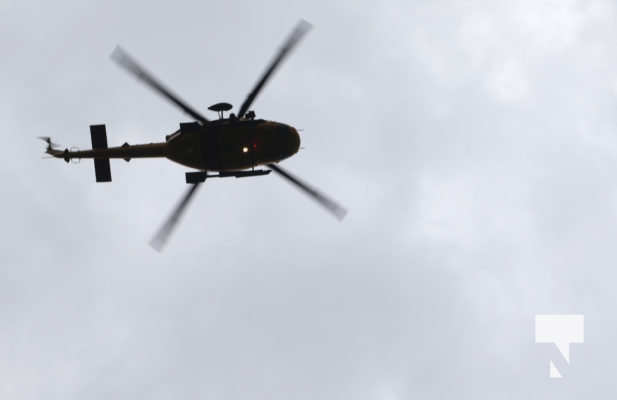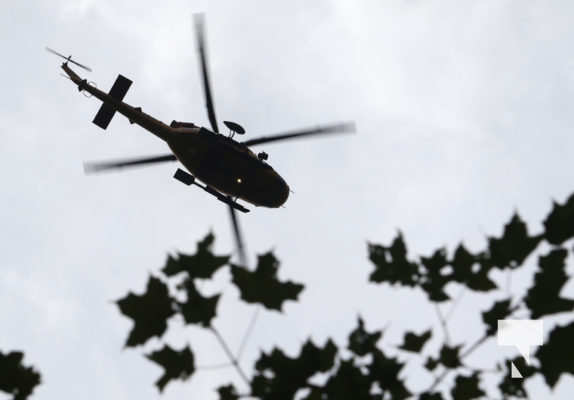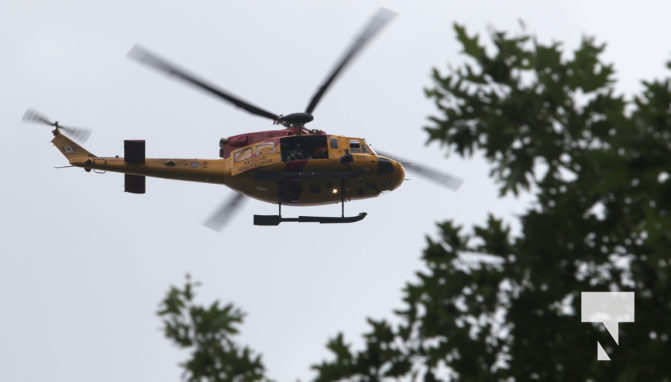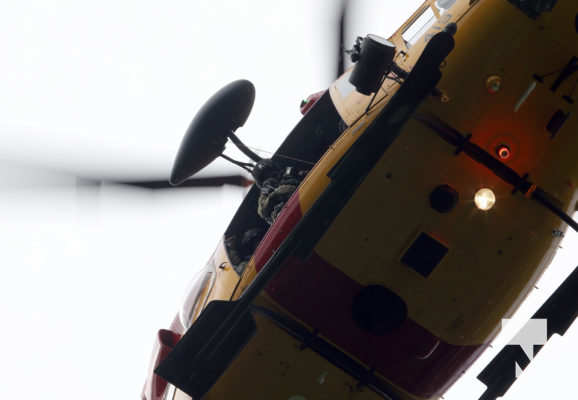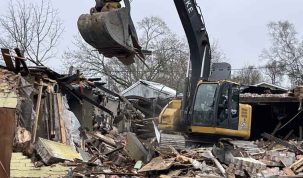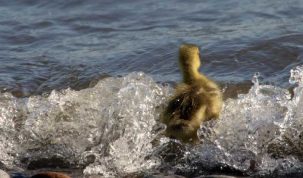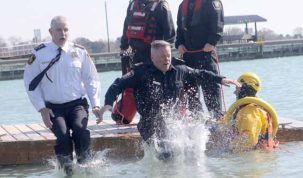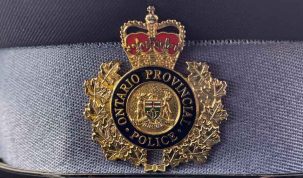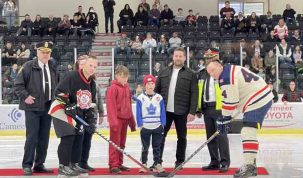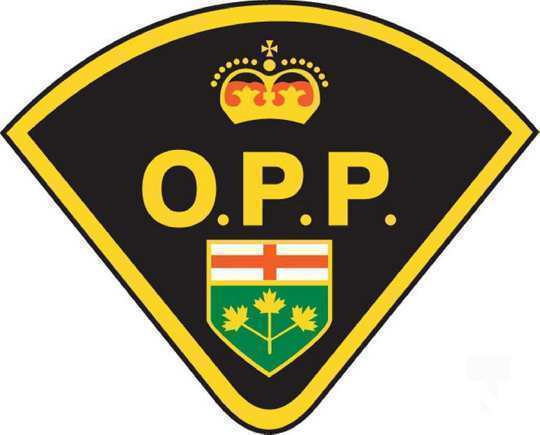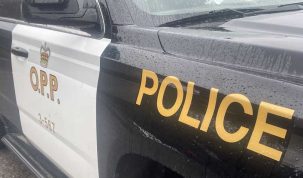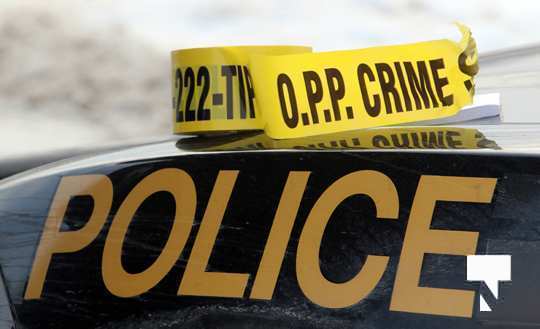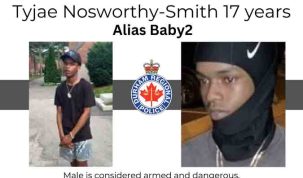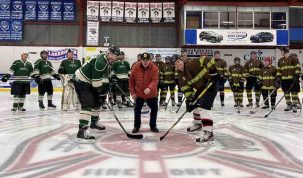The precision flying of members of 424 Search and Rescue (Tiger) Squadron is something the public rarely gets to see unless they are in need of help.
On Monday, August 13, 2018 Today’s Northumberland got the chance to shadow 424 Squadron during scenarios throughout the day.
Major Claude Courcelles who is the national liaison officer for Civil Air Search and Rescue Association (CASARA) and also works with 424 Search and Rescue Squadron from CFB Trenton helped explain the role of members of 424 Squadron throughout the day.
With the summer weather, many swimmers and boaters are on the water so a scenario was set up involving sinking vessel with a medical emergency.
A CC-130 Hercules aircraft along with a Griffon helicopters were tasked to the scenario, but at anytime a real life emergency can arise, which happened on Monday.
The CC-130 was reassigned to a medical emergency involving a 13-year-old child in Nunavet just prior to the starting of the exercise.
The crew of the 47-foot Canadian Coast Guard cutter Cape Rescue was the simulated boat in need of assistance.
Adrift approximately five miles south of Cobourg, the bright yellow Griffon was soon were visible on the horizon from the deck of the Cape Rescue.
The crew of the Griffon consisted of pilot Capt Sean Crites, First Officer Capt Caley Moulard, Fight Engineer MCpl Art Mason, Team Lead SAR Tech: Sgt Matt Davidson and Team member SAR Tech: MCpl Joe Stalteri.
The Griffon circled a number of times before moving in for a closer look at the rear deck of the ship.
In the scenario on Monday, the crew of the Cape Rescue maintains a speed while the Griffon paces the ship for the manoeuvre.
“They will do some approaches without lowering anyone just to calculate the wind and the water spray that the blades will generate,” said Major Courcelles.
“After they do a few dry runs that’s when a SARTEC will be hoisted down to the ship.”
Sgt Davidson was the first to be lowered from the aircraft followed by Mcpl Stalteri then a stretcher.
Cape Rescue’s aft deck is approximately three meters wide making for a tricky placement for the SARTECS who also have to contend with obstacles on the deck of the ship.
The exercise is precision work by everyone involved including members of the Cape Rescue.
“The pilot’s main focus is to maintain the helicopter in position,” said Major Courcelles.
“He has a reference point on the boat and then he tries to keep the helicopter on the altitude approximately 50 feet off the boat.”
“When the SARTECS are ready, they will tell the pilot to get in closer and the pilot will very slowly bring the helicopter closer, while talking to the engineer all the time.”
While the pilot maintains the course, the engineer who is by the open door has control of the hoist and will tell the pilot the position of the SARTEC being lowered and if any adjusting of the aircraft needs to take place.
“The engineer will control the helicopter, the pilot will pilot the helicopter.”
In essence, the engineer is the eyes of the pilot during the procedure watching the aircraft doesn’t get to close to the ship’s antenna’s.
Safely aboard the two SARTECS briefly chat with crew members of the Cape Rescue, look over their medical gear and once again prepare to be hoisted off by the Griffon. Just moments after the last SARTAC was in the helicopter, the crew was assigned to a rescue in the St. Lawrence seaway but was cancelled, and the afternoon scenario was back on.
The afternoon scenario involved a downed aircraft in the woods north of Centreton.
“Very difficult conditions for the crew to spot.”
Because the trees are approximately 30 feet high, the crew searching for the “wreckage” has to look almost straight down.
Once a personnel locator beacon is activated the signal will allow search crews to find the aircraft.
Major Courcelles also placed a yellow cross on the ground in a small, open area for the crew of the Griffon to spot.
“It’s very difficult to find anything because of the trees, that’s why the beacon is so important for us.”
The beacon sends out a GPS signal which narrows down locating an aircraft in dense woods.
After that crew members visually scan for any signs of broken branches, broken trees, smoke, or distress signal like even a small mirror.
“It is very important to practise everyday because we never know when someone will get into trouble.”
Information about the Search and Rescue states 424 Search and Rescue at CFB Trenton and 435 Search and Rescue from CFB Winnipeg provide primary search and rescue response for the largest region in Canada which extends from the Quebec City to the British Columbia/Alberta border and from the Canada/United States border to the North Pole.
The Squadron crews one Aircraft of each type on a 30 minute standby response posture during normal working hours and on a two hour posture at all other times in order to respond to distress cases as tasked by the Rescue Coordination Centre.
The 13-year-old child who was evacuated suffering from a medical emergency is doing fine.
For more photos click http://nesphotos.zenfolio.com/p687970661


